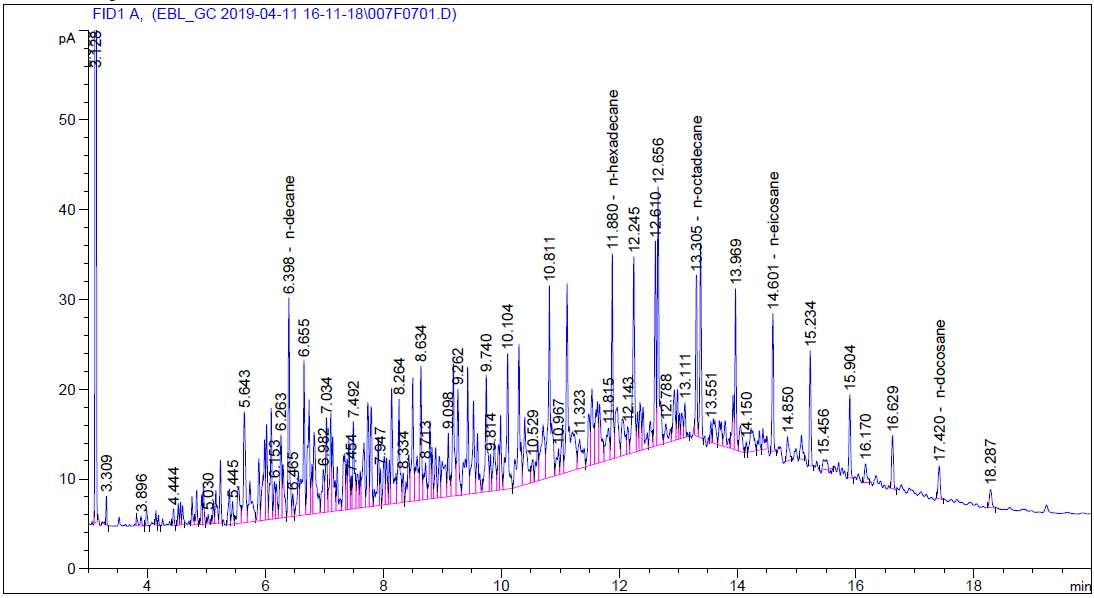by
NOON97 » Fri Apr 19, 2019 1:23 am
GasMan wrote:
You do not make it clear on what you are trying to achieve. The top chromatogram is to me Simulated Distillation, and this would be the correct integration. The second integration shown is for DHA, Detailed Hydrocarbon Analysis.
From your run time, I guess that you are trying to do Simulated Distillation, and you will need special software. You should also check out the ASTM methods, as there are several methods depending on the boiling range of your sample.
A DHA analysis would need a much longer column and runtime.
Gasman
Hello GasMan, and thank you so much for your comments.
Actually, I want to quantify both of them, TPH & each alkane (octane to docosane) concentration
According to your comments, I think I need to increase the runtime by changing the oven programme to measure the second one... (i.e. ramping rate)
However, since I use FID (Flame Ionization Detector) and HP-5 column, I'm worried about if it is possible without changing the instruments or column type.
So my additional question is, is it possible to do DHA with FID and HP-5 column?
Here are some information of the apparatuses I'm using now.
Instruments: 6980N Network GC system, Agilent Technologies, USA
Column: HP-5 capillary column (30 m × 0.320 mm × 0.25 μm)
Carrier gas: N2 (nitrogen gas)
Again, Thank you so much for your advice and comments



